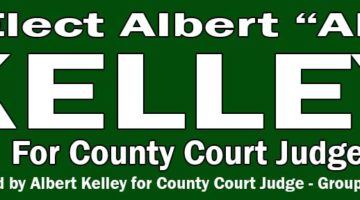Business Law 101 / Commercial Paper And Negotiable Instrumentals-Definitions
By Albert L. Kelley
When dealing with commercial paper, there are many terms that take on a special meaning. “Commercial paper” and “negotiable instrument” are two phrases for a written, signed promise to pay a sum of money. If created properly, a negotiable instrument may be sold, traded, or given to a third party.
There are four basic forms of negotiable instruments: promissory notes, drafts, checks and certificates of deposit.
An instrument is a “note” if it is a promise to pay money and is a “draft” if it is an order for the payment of money. An “order for payment of money” means a written instruction to a third party, such as a bank, to pay money signed by the person giving the instruction. As an example, if you have ever written a check, that is an “Order” to your bank to pay money to someone else.
The term “check” is a specific type of draft, payable on demand and drawn on a bank. An instrument may be a check even though it is described on its face by another term, such as “money order.” Other types of checks include “cashier’s check” “teller’s checks” “traveler’s check”.
The final type of negotiable instrument is the “certificate of deposit”. This is an instrument containing an acknowledgment by a bank that a sum of money has been received by the bank and a promise by the bank to repay the sum of money. A certificate of deposit is basically a note from the bank.
In order to qualify as a negotiable instrument, the item must be made payable to the “bearer” or to “order” at the time it is issued, it must be payable on demand or at a definite time, it must not require any other undertaking or instruction to do any act in addition to the payment of money, and it must be for money, not services or other exchange.
Who is a “bearer” or “order”? If a note is made payable to the bearer, it means that anyone in possession of the note can cash it. If paid to the “Order” it will mention a name such as “Pay to the Order of John Smith”. Only John Smith can cash it, unless he then assigns it to another person.
There are terms for the people involved in any transaction involving negotiable instruments. First is the “maker”. This is the person who writes or creates a promissory note. The “drawer” is the person who writes or creates a draft or check. Third is the “drawee”. The drawee is the person to whom a check or draft is addressed and who has been ordered to pay the sum of money. In a check, the bank is the drawee. Next we have the “payee”. This is the person named on the face of the instrument to receive payment. On your checks, for example, it states “Pay to the Order of John Smith”. John Smith is the payee.
There are two types of parties who may enforce payment on a negotiable instrument. The first is a holder. This means the person the paper was originally issued to or any person who the commercial paper has been sold to. The second type of party who may enforce is an assignee. As an example, if I write a check to John Smith, he is the holder as long as he has the check. If he sells the check to Ann Jones, she becomes the holder. If he gives the check to her, she then becomes the assignee. The difference between a holder and an assignee is an assignee hasn’t given any consideration for the note. Both types of parties have full rights to enforce the paper.
Al Kelley is a Florida business law attorney located in Key West and previously taught business law, personnel law and labor law at St. Leo University. He is also the author of “Basics of Business Law” and “Basics of Florida’s Small Claims Court” (Absolutely Amazing e-Books). This article is being offered as a public service and is not intended to provide specific legal advice. If you have any questions about legal issues, you should confer with a licensed Florida attorney.
[livemarket market_name="KONK Life LiveMarket" limit=3 category=“” show_signup=0 show_more=0]




No Comment